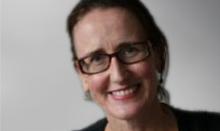MALCOLM Turnbull last week became the first Australian prime minister to address Federal Parliament in an Aboriginal language, that of the Ngunnawal people, traditional custodians of the land on which Canberra now stands.
It was a moving opening to his speech presenting the 8th Closing the Gap report on Indigenous health and other outcomes.
The report itself is somewhat less uplifting.
While there has been considerable progress on child mortality in recent years (a 33% reduction between 1998 and 2014), other measures have proved more intractable.
Employment targets are not being achieved, and educational targets show mixed results. Although not specifically designated as a Closing the Gap target, rates of imprisonment are actually increasing, something Mr Turnbull mentioned in his speech.
- Related: MJA — Therapeutic drug safety for Indigenous Australians: how do we close the gap?
- Related: MJA — Indigenous health expenditure deficits obscured in Closing the Gap reports
The report also showed Indigenous people still die on average at least 10 years earlier than other Australians, acknowledging “the target to close the gap in life expectancy by 2031 is not on track”.
Some experts have argued the focus on that unrealistic – though clearly important – life expectancy target may have actually been a distraction from more useful short-term measures.
Last week saw the release of other research that raises questions about government strategies in this area.
Monash University’s Faculty of Law evaluated the success of the Closing the Gap program, beginning with the 2007 Northern Territory intervention.
The Government failed on all measures except education, where it achieved a bare pass at 5 out of 10. For safer communities, and for health and life expectancy, it scored 4; for employment, 3; and for reduction in incarceration rates, 0.
The researchers lamented the lack of impartial data on the NT intervention, saying this had affected the quality of the debate about its outcomes.
“While a large number of reports have been undertaken, most are commissioned by government. Some reports have been criticised for relying on favourable figures to the exclusion of other data,” they wrote.
Conceived amid the dying throes of the Howard Government, the intervention never had the sound basis in research, policy and consultation it would have needed to make a real contribution to the well-being of Aboriginal people.
It began as a misguided response to the Little children are sacred report, which revealed disturbing rates of child sexual abuse in some Aboriginal communities.
An outcry from medical and other groups quickly led the government to revise its initial plan to send health teams into remote communities to examine children for signs of sexual abuse.
The modified program instead offered general child health checks, delivered by visiting interstate teams with logistical support provided by the Army.
- Related: MJA — Success in Closing the Gap: favourable neonatal outcomes in a metropolitan Aboriginal Maternity Group Practice Program
- Related: MJA InSight — Cardiac priority to close the gap
Other measures under the intervention included legislative changes, quarantining of welfare payments, restrictions on the sale of alcohol, and educational and employment programs.
As a journalist reporting on the intervention, in 2007, I accompanied one of the health teams during their stay in a remote community.
The doctors and other health workers were people of enormous goodwill, but I couldn’t help wondering at the time what it was all achieving.
The child health checks ended up costing around $1700 per child, with the total cost, including follow-up services, topping $54 million, according to the Department of Health.
Many of the checks provided by the visitors duplicated existing services.
“Do they even know we’re here?” one remote area nurse said to me in bewilderment, as she watched a visiting health team conduct the same checks she herself regularly performed.
The intervention did, perhaps, provide more consistent data on the health of the Northern Territory’s Aboriginal children. They certainly revealed the atrocious state of dental health in many communities.
Around 70% of children examined received at least one referral for follow-up care. The most common specialist referral was for dental problems (35% of children).
Unfortunately, this hastily staged and poorly thought-out program had not made adequate provision for this kind of follow-up: 40% of the children referred for dental care did not receive it.
As the Department of Health itself concluded: “The lack of adequate policy processes meant that the child health checks did not follow international best practice for screening programs.”
The failure to consult either the health workers on the ground or, shamefully, the Aboriginal people in the affected communities meant the intervention was compromised from the start.
Let’s hope future efforts to improve the outcomes of Indigenous Australians don’t go down that path.
As Mr Turnbull told Parliament last week, “It is time for government to do things with Aboriginal people, not do things to them.”
Jane McCredie is a Sydney-based science and medicine writer.

 more_vert
more_vert
There are 600,000 Australians of Aboriginal descent in Australia.About 400,000 are integrated into the economic and social fabric of Australian society with jobs ,mortgages,kids at school etc..The improvements in health,education and employment statistics in Aboriginal Australians are directly related to a steady increase in INTEGRATION.
About 200,000 Aboriginal Australians are fringe dwellers or live in the remote areas and their health,education and employment statistics have in fact deteriorated over the last 30 years despite an annual budget of 30 billion dollars.(See “The Australian” 11th November 2014).
All our PM can offer is “It’s time for government to do things with Aboriginal people,not do things to them”.Not good enough! It’s been said countless times before.
My meagre contribution is to 1)encourage integration and 2)promote private home ownership especially in the remote areas.When people own their own homes then they look after them,leading to improved hygiene with healthier kids who can attend school without perforated eardrums,scabies and trachoma.